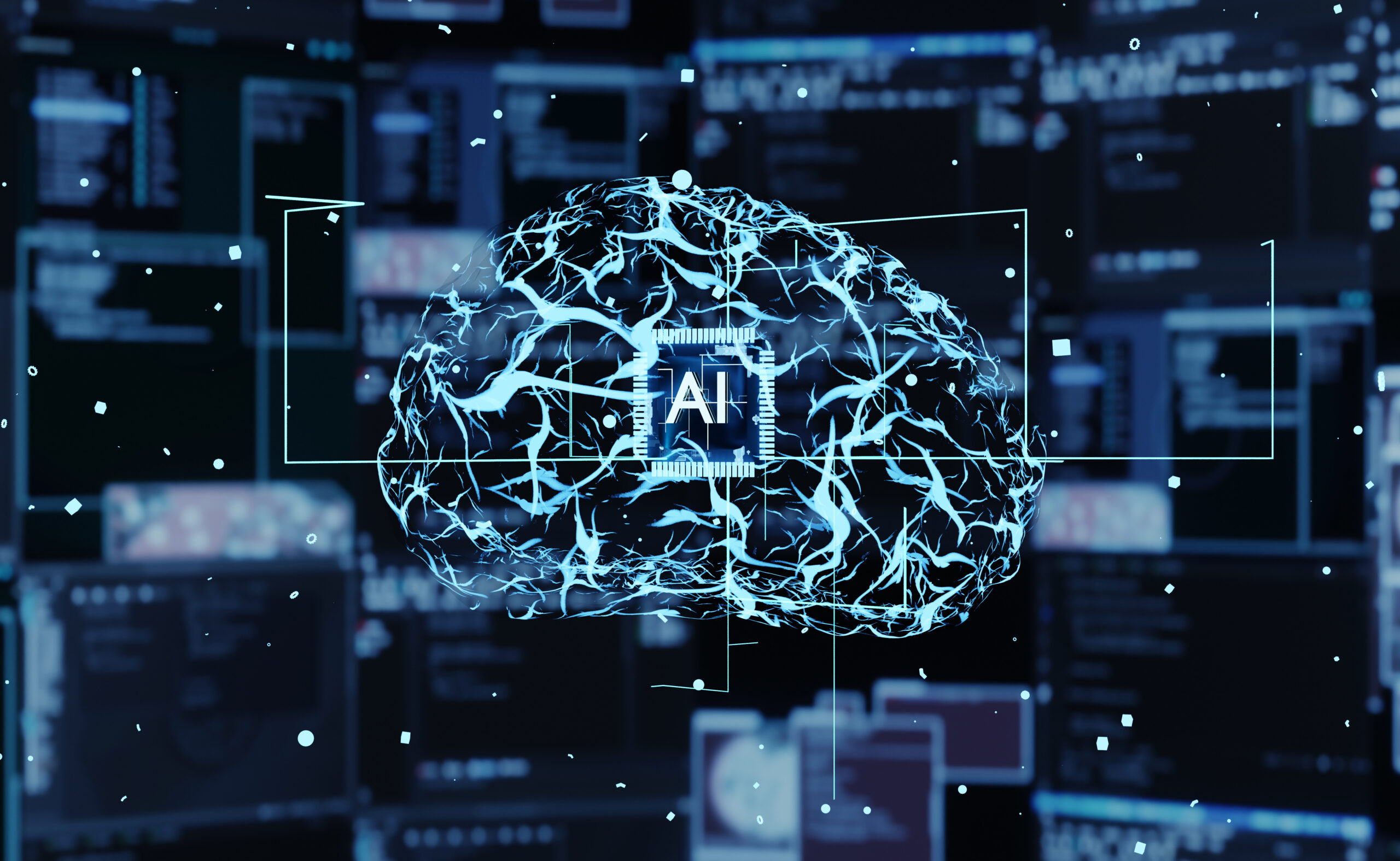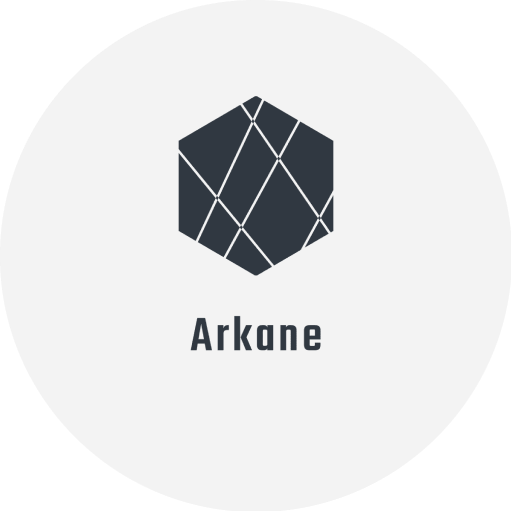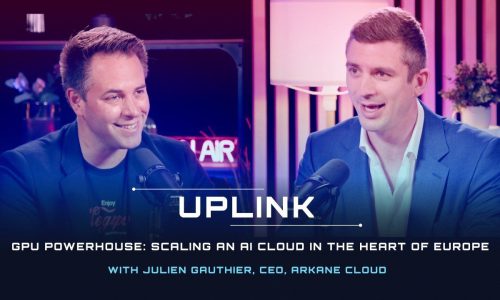
AI-driven Applications and Use Cases of Nvidia H100

Introduction
The realm of accelerated computing is witnessing a revolutionary transformation with the advent of the NVIDIA® H100 Tensor Core GPU, a cornerstone in the NVIDIA Hopper™ architecture. This GPU is not merely an incremental step forward but an order-of-magnitude leap in computing, bridging the gap between ambition and realization in AI and high-performance computing (HPC) domains.
The NVIDIA H100 is designed to address the most complex and data-intensive challenges, making it an ideal powerhouse for AI-driven applications. It stands out with its ability to handle large language models (LLMs) up to 175 billion parameters, thanks to its dedicated Transformer Engine, NVLink, and a substantial 80GB HBM3 memory. This capability enables it to bring LLMs to the mainstream, significantly enhancing the performance of models like GPT-175B by up to 12X over previous generations, even in power-constrained environments.
Furthermore, the H100 facilitates AI adoption in mainstream servers by offering a five-year subscription to the NVIDIA AI Enterprise software suite. This suite provides access to essential AI frameworks and tools, enabling the development of a wide array of AI applications ranging from chatbots and recommendation engines to vision AI.
The GPU’s fourth-generation Tensor Cores and Transformer Engine with FP8 precision contribute to a staggering 4X faster training for models like Llama 2, compared to its predecessors. In terms of AI inference, the H100 extends NVIDIA’s leadership with advancements that boost inference performance by up to 30X, maintaining low latency and high accuracy for LLMs.
Addressing the demands of high-performance computing, the H100 triples the floating-point operations per second (FLOPS) of double-precision Tensor Cores, delivering 60 teraflops of FP64 computing. It’s particularly adept at AI-fused HPC applications, achieving one petaflop of throughput for single-precision matrix-multiply operations without necessitating code changes.
The H100 is not just about raw performance; it also addresses the complexities of data analytics in AI application development. It provides the necessary compute power and scalability to efficiently manage large datasets scattered across multiple servers, which is often a bottleneck in CPU-only server environments.
Moreover, its second-generation Multi-Instance GPU (MIG) technology allows for the partitioning of each GPU into up to seven separate instances. This feature, coupled with confidential computing support, makes the H100 particularly suitable for cloud service provider environments, ensuring secure, multi-tenant usage.
Lastly, NVIDIA Confidential Computing, a built-in security feature of the H100, marks it as the world’s first accelerator with confidential computing capabilities. This feature secures and isolates workloads, ensuring the integrity and confidentiality of data and applications in use, which is crucial for compute-intensive workloads like AI and HPC.
In conclusion, the NVIDIA H100 Tensor Core GPU is a paradigm shift in accelerated computing, driving the next wave of AI and high-performance computing with unparalleled performance, scalability, and security.
Overview of Nvidia H100
Delving into the architecture of the Nvidia H100 GPU reveals a plethora of advancements that redefine the capabilities of AI and HPC applications. At the heart of these innovations is the new fourth-generation Tensor Core technology. These cores significantly enhance matrix computations, crucial for AI and HPC tasks, offering up to 6x faster performance compared to the A100. This leap is partly due to the increased speed per SM, the higher count of SMs, and elevated clock speeds in the H100.
The Transformer Engine is a pivotal component in the H100’s architecture, enabling up to 9x faster AI training and 30x faster AI inference, specifically for large language models, compared to the previous generation A100. This remarkable boost in performance is crucial for applications that require real-time processing and complex computations.
Nvidia has also made significant strides in the realm of connectivity with the new NVLink Network interconnect. This feature allows for efficient GPU-to-GPU communication across up to 256 GPUs, spanning multiple compute nodes, thereby enhancing the scalability and efficiency of large-scale computing tasks.
Another notable feature is the Secure Multi-Instance GPU (MIG) technology, which partitions the GPU into isolated instances, optimizing quality of service for smaller workloads. This aspect of the H100 architecture is crucial for cloud service providers and enterprises that require a high degree of workload isolation and security.
The H100 Tensor Core architecture is a testament to Nvidia’s continued innovation. These cores are specialized for matrix multiply and accumulate (MMA) operations, delivering unmatched performance for AI and HPC applications. The architecture offers double the raw dense and sparse matrix math throughput per SM compared to A100, supporting a range of data types like FP8, FP16, BF16, TF32, FP64, and INT8.
Furthermore, the introduction of new DPX instructions enhances the performance of dynamic programming algorithms, crucial in areas like genomics processing and robotics. These instructions accelerate performance by up to 7x over Ampere GPUs, significantly reducing computational complexity and time-to-solution for complex problems.
Finally, the H100’s memory architecture, featuring HBM3 and HBM2e DRAM subsystems, addresses the growing need for higher memory capacity and bandwidth in HPC, AI, and data analytics. The H100 SXM5 GPU supports 80 GB of fast HBM3 memory with over 3 TB/sec of memory bandwidth, marking a substantial advancement over the A100. Additionally, the L2 cache in H100, being 1.25x larger than that in A100, allows for caching larger portions of models and datasets, enhancing overall performance and efficiency.
Enhancing Large Language Models (LLMs)
The transformation in training large language models (LLMs) brought about by the NVIDIA H100 is monumental. In the contemporary AI landscape, where LLMs such as BERT and GPT are foundational, the size of these models has escalated to trillions of parameters. This exponential growth has extended training times to impractical lengths, often stretching into months, which is unfeasible for many business applications.
The H100 addresses this challenge with its Transformer Engine, a cornerstone of the NVIDIA Hopper architecture. This engine employs 16-bit and the newly introduced 8-bit floating-point precision, alongside advanced software algorithms, drastically enhancing AI performance and capabilities. By reducing the math operations to eight bits, the Transformer Engine facilitates the training of larger networks more swiftly, without sacrificing accuracy. This efficiency is crucial as most AI training relies on floating-point math, traditionally done using 16-bit and 32-bit precision. The introduction of 8-bit operations represents a significant shift in the approach to training LLMs, enabling faster computation while maintaining the integrity of the model’s performance.
Diving deeper into the technicalities, the Transformer Engine utilizes custom NVIDIA fourth-generation Tensor Core technology, designed specifically to accelerate training for transformer-based models. The innovative use of mixed FP8 and FP16 formats by these Tensor Cores significantly boosts AI calculations for transformers, with FP8 operations providing twice the computational throughput of 16-bit operations. This advancement is pivotal in managing the precision of models intelligently to maintain accuracy while benefiting from the performance of smaller, faster numerical formats. The Transformer Engine leverages custom, NVIDIA-tuned heuristics that dynamically choose between FP8 and FP16 calculations, thereby optimizing each layer of a neural network for peak performance and accuracy.
This architectural innovation in the H100 is also evident in its impact on AI workloads beyond LLMs. For instance, in Megatron 530B, a model for natural language understanding, the H100 demonstrates its capability by delivering up to 30x higher inference per-GPU throughput compared to the NVIDIA A100 Tensor Core GPU. This dramatic increase in performance, coupled with a significantly reduced response latency, underscores the H100’s role as an optimal platform for AI deployments. Notably, the Transformer Engine also enhances inference in smaller, highly optimized transformer-based networks, delivering up to 4.3x higher inference performance in benchmarks like MLPerf Inference 3.0, compared to its predecessor, the NVIDIA A100.
AI Adoption in Mainstream Servers
The enterprise adoption of AI has shifted from a niche interest to a mainstream necessity, demanding robust, AI-ready infrastructure. The NVIDIA H100 GPUs, tailored for mainstream servers, exemplify this transition. These GPUs are bundled with a five-year subscription to the NVIDIA AI Enterprise software suite, inclusive of enterprise support. This suite not only simplifies the adoption of AI but also ensures the highest performance levels. With access to comprehensive AI frameworks and tools, organizations are equipped to construct H100-accelerated AI workflows. These workflows span a broad range, from AI chatbots and recommendation engines to vision AI, thereby opening new avenues for innovation and productivity in various sectors.
The H100’s integration into mainstream servers marks a significant leap in AI and HPC capabilities. Featuring fourth-generation Tensor Cores and a Transformer Engine with FP8 precision, the H100 offers up to 4X faster training for advanced models like GPT-3 (175B). The incorporation of fourth-generation NVLink, boasting a 900 gigabytes per second GPU-to-GPU interconnect, along with NDR Quantum-2 InfiniBand networking, ensures accelerated communication across GPU nodes. This network architecture, combined with PCIe Gen5 and NVIDIA Magnum IO™ software, empowers the H100 to deliver efficient scalability. This scalability ranges from small enterprise systems to vast, unified GPU clusters, thus democratizing access to next-generation exascale HPC and AI for a wide array of researchers.
In the realm of business applications, AI’s versatility is unmatched, catering to a diverse range of challenges using various neural network architectures. The H100 stands out as an exceptional AI inference accelerator, offering not just the highest performance but also unparalleled versatility. It achieves this through advancements that boost inference speeds by up to 30X while maintaining the lowest latency. The fourth-generation Tensor Cores in the H100 enhance performance across all precisions, including FP64, TF32, FP32, FP16, INT8, and now FP8, optimizing memory usage and boosting performance, all while ensuring accuracy for LLMs.
Accelerating AI Training and Inference
The NVIDIA H100 represents a paradigm shift in AI training and inference capabilities, setting new benchmarks in performance and efficiency. At the forefront of this advancement is the Transformer Engine, a fusion of software and the cutting-edge NVIDIA Hopper Tensor Core technology. This engine is tailor-made for accelerating transformer model training and inference, a pivotal technology in today’s AI landscape. The transformative aspect of the Transformer Engine lies in its intelligent management of FP8 and 16-bit calculations. This dynamic handling of precision in each layer of a neural network results in up to 9x faster AI training and up to 30x faster AI inference speedups on large language models, a significant leap over the previous generation A100 GPU.
Moreover, the H100’s fourth-generation Tensor Core architecture, along with the innovative Tensor Memory Accelerator (TMA) and other architectural enhancements, collectively contribute to up to 3x faster performance in high-performance computing (HPC) and AI applications. This improvement is not limited to specific tasks but extends across a wide spectrum of AI and HPC use cases, showcasing the H100’s versatility and power.
Delving into the performance specifics, the H100 GPU exhibits exceptional computational capabilities across various floating-point operations. For instance, the peak performance for FP64 Tensor Core operations reaches 60 TFLOPS, while for FP32 it is 60 TFLOPS. The performance further escalates with FP16 and BF16 operations, achieving 120 TFLOPS. Remarkably, the peak performance for FP8 Tensor Core operations reaches a staggering 2000 TFLOPS (or 4000 TFLOPS with the Sparsity feature), showcasing the H100’s prowess in handling complex AI computations with unprecedented efficiency.
Another key aspect of the H100’s architecture is its focus on asynchronous execution, a critical feature for modern GPUs. This capability enables more overlap between data movement, computation, and synchronization, thereby optimizing GPU utilization and enhancing performance. The NVIDIA Hopper Architecture introduces new features like the Tensor Memory Accelerator (TMA) and a new asynchronous transaction barrier, further bolstering the H100’s ability to handle complex, data-intensive AI tasks more efficiently.
Revolutionizing High-Performance Computing (HPC)
The NVIDIA H100 Tensor Core GPU heralds a new era in high-performance computing (HPC), delivering an order-of-magnitude leap in performance over its predecessor, the A100. This ninth-generation data center GPU has been meticulously engineered to enhance strong scaling for AI and HPC workloads, achieving significant improvements in architectural efficiency. In contemporary mainstream AI and HPC models, the H100, equipped with InfiniBand interconnect, provides up to 30x the performance of the A100, marking a generational leap in computing capability. Moreover, the NVLink Switch System interconnect addresses some of the most demanding computing workloads, tripling performance in certain cases over the H100 with InfiniBand.
The NVIDIA Grace Hopper Superchip, featuring the H100, is a groundbreaking innovation for terabyte-scale accelerated computing. This architecture is designed to deliver up to 10x higher performance for large-model AI and HPC applications. It combines the H100 with the NVIDIA Grace CPU, utilizing an ultra-fast chip-to-chip interconnect that provides 900 GB/s of total bandwidth. This design results in 30x higher aggregate bandwidth compared to the fastest current servers, significantly enhancing performance for data-intensive applications.
The H100’s new streaming multiprocessor (SM) includes numerous performance and efficiency enhancements. Key among these is the fourth-generation Tensor Cores, which are up to 6x faster than those in the A100. This includes per-SM speedup, additional SM counts, and higher clock speeds. The introduction of new DPX instructions further accelerates dynamic programming algorithms, such as those used in genomics processing and robotics, by up to 7x over the A100 GPU. Additionally, the H100 achieves 3x faster IEEE FP64 and FP32 processing rates compared to the A100.
Significant architectural advancements in the H100 include new thread block cluster features, enabling efficient data synchronization and exchange across multiple SMs. Furthermore, the distributed shared memory feature allows direct SM-to-SM communications, enhancing data processing efficiency. The introduction of the Tensor Memory Accelerator (TMA) and new asynchronous execution features also contributes to the H100’s superior performance in HPC applications.
The H100’s HBM3 memory subsystem provides a nearly 2x bandwidth increase over the previous generation, with the H100 SXM5 GPU being the world’s first with HBM3 memory, delivering 3 TB/sec of memory bandwidth. The 50 MB L2 cache architecture in the H100 further optimizes data access, caching large portions of models and datasets for repeated access and reducing trips to HBM3.
Another key feature of the H100 is its second-generation Multi-Instance GPU (MIG) technology, providing approximately 3x more compute capacity and nearly 2x more memory bandwidth per GPU instance compared to the A100. This technology is complemented by Confidential Computing support, which enhances data protection and virtual machine isolation in virtualized and MIG environments. The fourth-generation NVIDIA NVLink in the H100 also contributes to its performance, offering a significant bandwidth increase for multi-GPU operations.
The third-generation NVSwitch technology and the new NVLink Switch System interconnect technology in the H100 further enhance its HPC capabilities. These technologies enable up to 32 nodes or 256 GPUs to be connected over NVLink, providing massive bandwidth and computational power, capable of delivering one exaFLOP of FP8 sparse AI compute.
Lastly, PCIe Gen 5 in the H100 provides 128 GB/sec of total bandwidth, enabling the GPU to interface efficiently with high-performing CPUs and SmartNICs or data processing units (DPUs). This integration is pivotal for modern HPC environments, where seamless interaction between different components of the computing infrastructure is essential.
In summary, the NVIDIA H100 GPU introduces a suite of features and technological advancements that significantly improve its performance in HPC applications, making it an ideal solution for tackling the world’s most challenging computational problems.
Enhancing Data Analytics
The NVIDIA H100 Tensor Core GPU represents a substantial advancement in the field of data analytics, an area where computing performance is paramount. Data analytics, especially in the context of AI application development, often becomes a bottleneck due to the extensive time it consumes. This challenge is compounded by the dispersion of large datasets across multiple servers. In such scenarios, traditional scale-out solutions, reliant on commodity CPU-only servers, struggle with a lack of scalable computing performance.
The H100 addresses this challenge head-on by delivering significant compute power coupled with a remarkable 3 terabytes per second (TB/s) of memory bandwidth per GPU. This combination of power and bandwidth, along with scalability features like NVLink and NVSwitch™, empowers the H100 to tackle data analytics tasks with high efficiency. Furthermore, when integrated with NVIDIA Quantum-2 InfiniBand and Magnum IO software, as well as GPU-accelerated Spark 3.0 and NVIDIA RAPIDS™, the H100 forms a part of the NVIDIA data center platform. This platform is uniquely capable of accelerating massive workloads, offering unmatched performance and efficiency levels.
The H100’s memory architecture plays a critical role in its data analytics capabilities. It features HBM3 and HBM2e DRAM subsystems, which are essential as datasets in HPC, AI, and data analytics continue to grow both in size and complexity. The H100 SXM5 GPU supports 80 GB of fast HBM3 memory, delivering over 3 TB/sec of memory bandwidth. This is effectively a 2x increase over the memory bandwidth of the A100. In addition to this, the PCIe H100 offers 80 GB of fast HBM2e with over 2 TB/sec of memory bandwidth. The 50 MB L2 cache in H100, which is 1.25x larger than the A100’s 40 MB L2 cache, further enhances performance by enabling caching of large portions of models and datasets for repeated access, thus improving overall data analytics performance.
Generative AI and data analytics are rapidly evolving fields, and the NVIDIA H100 GPUs have been instrumental in setting several performance records in these areas. For example, in quantitative applications for financial risk management, the H100 GPUs have shown incredible speed and efficiency, setting records in recent STAC-A2 audits. This performance is a testament to the H100’s ability to handle diverse workloads efficiently, including those in data processing, analytics, HPC, and quantitative financial applications.
The NVIDIA H100 is an integral part of the NVIDIA data center platform, built to cater to AI, HPC, and data analytics applications. This platform accelerates over 4,000 applications and is available for a wide range of uses, from data centers to edge computing. The H100 PCIe GPU, with its groundbreaking technology, delivers dramatic performance gains and offers cost-saving opportunities, thereby accelerating a vast array of workloads. Its capabilities in securely accelerating workloads across different data center scales – from enterprise to exascale – make it a versatile solution for data analytics and related applications.
Newsletter
You Do Not Want to Miss Out!
Step into the Future of Model Deployment. Join Us and Stay Ahead of the Curve!

![The 4 Major Corporate Fears About AI [and How Arkane Crushes Them]](https://arkanecloud.com/wp-content/uploads/elementor/thumbs/image-fears-r83x02fmwkg0873grkx2f5jvdsy2k1b00h5jqz1vi0.png)



